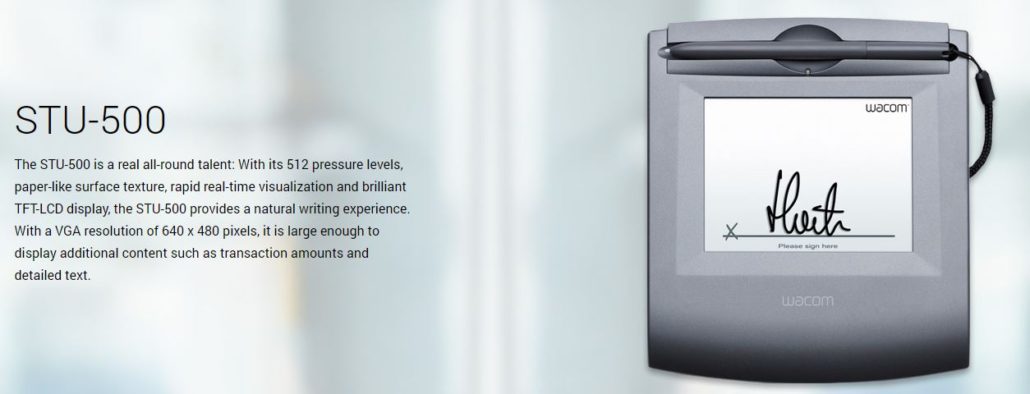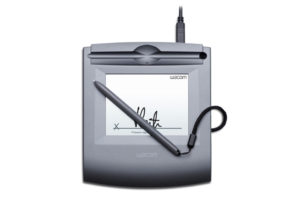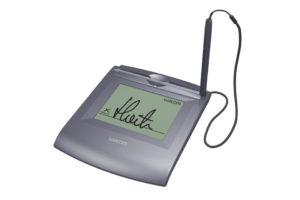
Wacom STU-500 LCD Signature Pad
Wacom STU-500 LCD Signature Pad
STU-500 features and benefits
5.0″ monochrome, trans reflective LCD display provides easy viewing even in bright lighting conditions
Screen resolution of 640 x 480 provides room for soft keys and can clearly display text
Serial data connectivity is available as an option
Wacom’s patented EMR technology provides a maintenance-free electronic pen
Hardened glass signing surface is extremely durable and highly resistant to scratches
Captures legally-binding electronic handwritten signatures
Data encryption is available as an option
The STU-500 LCD signature pad features a high-quality reflective display with a 640 x 480 resolution, providing sharp viewing of the smallest text and ample space for even the longest signatures. The large screen offers the flexibility to display images and text or to incorporate soft keys or menu buttons. Its reflective TFT technology means there is no need for backlighting, for a bright, high contrast viewing experience in business environments, and a longer lifetime. Thanks to these features, the STU-500 is the ideal signature pad for day-to-day use at public counters, allowing the reliable capture of millions of electronic signatures.


Specifications:
- Product Dimensions160 x 183 x 25 mm
- Communication interfaceUSB (serial optional)
- Power Supplyvia USB
- Security Lock SlotNo
- Warranty3 years
- Screen TypeTFT LCD, monochrome, reflective
- Screen Size5″ diagonal
- Screen Dimensions100 x 77 m
- Native Resolution640 x 480
- Reading MethodElectromagnetic resonance (EMR)
- Pen pressure levels512
- Sensor Resolution2540 lpi
- Coordinate accuracy± 0.5 mm (center)
- Battery-free penYes
- Cordless penYes
- Report Rate200 pps
Are Electronic Handwritten Signatures Right for Your Business?
Going paperless is not an easy task. Rarely do you have the luxury of specifying and deploying entirely new customer-facing systems from end-to-end. You will likely need to integrate new applications or functionality into existing systems. This requires diligence in researching your options and careful planning. Once your organization has determined that you want the benefits of a paperless process, the next step is to choose a method of collecting both authorizations and declarations of intent.
What is an electronic signature and what is it used for?
A handwritten signature establishes a clear link between a written document and its author. An electronic signature is used to assign an electronic document to its originator, thereby assuring authorship. A qualified signature also safeguards a document’s authenticity (is the document actually from whom it says it is?) and integrity (has the document been changed at any time during the transmission process?).
What is the difference between an electronic signature and a digital signature?
Electronic signature is a legal term with a certain degree of legal force. Digital signature is a mathematical and technical term and is used for producing electronic signatures.?

